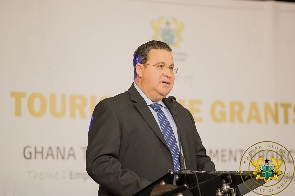The World Bank’s new Country Climate and Development Report for Ghana, has indicated that at least one million more people could fall into poverty due to climate shocks if urgent actions are not taken. The report added that income could also reduce by up to 40% for poor households by 2050. The report called for the pursuit of a development pathway that builds resilience to climate change and fosters a transition to low-carbon growth through a combination of policies and public and private investments. “Ghana’s economic and human development is vulnerable to climate change. On average, flooding affects around 45,000 Ghanaians every year, and half of Ghana’s coastline is vulnerable to erosion and flooding as a result of sea-level rise,” Pierre Laporte, World Bank Country Director for Ghana, Liberia, and Sierra Leone stated in a Joy FM report. The World Bank report said, Ghana as a country further need to take prompt action else the higher temperatures and heat stress will affect crop and labour productivity, whilst more erratic rainfall patterns will damage buildings and infrastructure. On land degradation, water insecurity and local air pollution, the report pointed out its overall impact on human capital and productivity. Ghana, according to the World Bank, despite achieving major development gains over the past three decades, progress has slowed down. The West African country, the report categorically stated has not fully managed to convert its natural wealth into sufficient infrastructure, human, and institutional capital for sustained growth. “The report demonstrates that Ghana can simultaneously pursue its long-term development and climate goals,” Pierre Laporte added. “Ghana’s contribution to global greenhouse gases emissions is small, with emissions on a per capita basis at 24% of the global average. The country can take a more resilient development pathway, avoiding costly lock-ins, leapfrogging to cutting-edge technologies, and starting to mobilize climate finance.” The World Bank Group’s Country Climate and Development Reports identified six priority areas for a Climate Resilient and Low Carbon Development pathway that will foster a greener, resilient, and inclusive growth in the country. Others include the new core diagnostic reports that explore the interlink between climate change and development. They help countries prioritize the most impactful actions that can foster a low-carbon transition and boost resilience while delivering on broader development goals. CCDRs build on data and rigorous research and identify main pathways to reduce GHG emissions, their externalities and climate vulnerabilities, including the costs and challenges as well as benefits and opportunities from doing so. Watch the latest episode of The Lowdown below:
Click to view details



Business News of Thursday, 3 November 2022
Source: www.ghanaweb.com

















